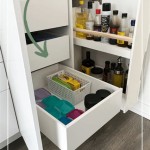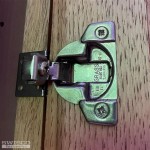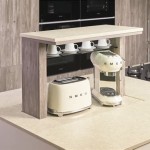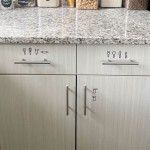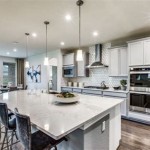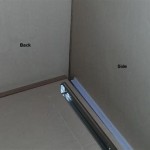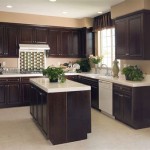How To Renovate Your Kitchen on a Budget
Kitchen renovations are often considered among the most expensive home improvement projects. The cost can quickly escalate, with new appliances, custom cabinetry, and complex plumbing configurations all contributing to a significant financial burden. However, a kitchen renovation does not necessarily require breaking the bank. With careful planning, strategic decision-making, and a focus on cost-effective solutions, it is possible to achieve a refreshed and functional kitchen space without exceeding a predetermined budget. This article will explore various strategies for renovating a kitchen while minimizing expenses.
Planning and Prioritization: The Foundation of a Budget-Friendly Renovation
The initial stage of any successful renovation is thorough planning. This involves a comprehensive assessment of the existing kitchen layout, identifying areas that require improvement, and defining specific goals for the renovation. A critical aspect of this planning phase is establishing a realistic budget and carefully allocating funds to various project components.
Begin by creating a detailed inventory of the existing kitchen features, noting their condition and functionality. Identify aspects that are functionally inadequate, visually unappealing, or simply no longer meet the needs of the household. This evaluation will help to determine which elements must be replaced and which can be retained or repurposed. For example, if the existing kitchen cabinets are structurally sound but aesthetically outdated, consider refacing them rather than replacing them entirely.
Once the desired improvements have been identified, research the associated costs. Obtain quotes from multiple contractors for larger projects, such as electrical work or plumbing modifications. Consult with suppliers to get accurate pricing for materials like flooring, countertops, and appliances. This research will provide a realistic estimate of the total project cost.
The next crucial step is prioritizing the renovation tasks based on their impact and necessity. Distinguish between essential upgrades, such as repairing a leaking faucet or replacing damaged flooring, and cosmetic enhancements, like installing a trendy backsplash or adding decorative lighting. Focus on addressing the fundamental issues first, ensuring that the kitchen is functional and safe before investing in purely aesthetic improvements. This prioritization process allows for strategic allocation of resources, maximizing the impact of the available budget.
Furthermore, consider the potential return on investment for each renovation task. While a high-end appliance might be desirable, its cost may not be justified if the primary goal is to improve the kitchen's functionality and resale value. Opt for more practical and cost-effective alternatives that offer comparable performance without the premium price tag. Similarly, explore DIY options for tasks that do not require specialized skills or expertise, such as painting walls or installing new cabinet hardware. This hands-on approach can significantly reduce labor costs.
Cost-Effective Material Choices: Smart Selections for a Stylish Kitchen
The selection of materials plays a significant role in determining the overall cost of a kitchen renovation. Opting for less expensive alternatives without sacrificing quality and durability is essential for staying within budget. Explore various options and compare prices before making any final decisions.
For countertops, consider alternatives to natural stone, such as granite or marble. Laminate countertops offer a wide range of colors and patterns at a fraction of the cost. While they may not possess the same luxurious appeal as natural stone, laminate countertops are durable, easy to clean, and resistant to stains. Another cost-effective option is butcher block, which provides a warm and inviting aesthetic. Butcher block countertops can be easily sanded and refinished to maintain their appearance over time.
When it comes to flooring, explore options beyond hardwood or tile. Luxury vinyl plank (LVP) flooring offers a durable, waterproof, and scratch-resistant alternative that mimics the look of hardwood or tile at a significantly lower price. LVP flooring is also easy to install, making it a suitable option for DIY projects. Another budget-friendly choice is sheet vinyl, which offers a seamless and waterproof surface. Sheet vinyl is available in a wide variety of patterns and colors, providing numerous design possibilities.
Cabinetry is often one of the most significant expenses in a kitchen renovation. To save money on cabinets, consider refacing existing cabinets instead of replacing them. Refacing involves replacing the cabinet doors and drawer fronts, as well as applying a new veneer to the cabinet frames. This can dramatically transform the appearance of the cabinets without the cost of new construction. Another option is to explore semi-custom cabinets, which offer a balance between affordability and customization. These cabinets are pre-built but can be modified to fit specific kitchen dimensions and design preferences.
For backsplashes, consider using ceramic tile instead of glass or natural stone. Ceramic tile is a versatile and affordable option that comes in a wide range of colors, shapes, and sizes. Explore creative layouts and patterns to add visual interest without exceeding the budget. Another option is to use peel-and-stick tiles, which are easy to install and require no grout. While they may not offer the same durability as traditional tile, peel-and-stick tiles can provide a cost-effective and temporary solution.
Furthermore, when selecting appliances, consider purchasing energy-efficient models. While the initial cost may be slightly higher, energy-efficient appliances can save money on utility bills over the long term. Look for models with Energy Star certifications and compare energy consumption ratings before making a purchase. Explore open-box or scratch-and-dent appliances, which are often available at discounted prices. These appliances may have minor cosmetic imperfections but are typically in full working order.
DIY and Repurposing: Maximizing Savings Through Ingenuity
Embracing a DIY approach and repurposing existing materials can significantly reduce renovation costs. Many tasks, such as painting walls, installing cabinet hardware, and assembling flat-pack furniture, can be completed by homeowners with basic skills and tools. Repurposing existing materials not only saves money but also adds character and uniqueness to the kitchen.
Before discarding old cabinets or appliances, consider whether they can be repurposed for a new function. Old cabinets can be transformed into storage units for a pantry or garage. Old appliances can be donated to charity or sold for scrap metal. Even seemingly insignificant items, like old jars or bottles, can be repurposed as decorative elements or storage containers.
When painting walls, consider using leftover paint from previous projects. This can save money on purchasing new paint and reduce waste. If purchasing new paint, choose a high-quality paint that offers good coverage and durability. This will minimize the need for multiple coats, saving both time and money.
Install new cabinet hardware to instantly update the look of existing cabinets. New knobs and pulls can dramatically change the style of the cabinets without the cost of replacing them entirely. Explore online retailers and discount stores for affordable hardware options.
Build open shelving from reclaimed wood or inexpensive lumber. Open shelving provides a stylish and functional storage solution while adding visual interest to the kitchen. Customize the shelves to fit specific dimensions and design preferences. Utilize repurposed materials, such as old crates or pallets, to create unique and rustic shelving units.
Create a custom backsplash using mosaic tiles or paint stencils. Mosaic tiles can be arranged in a variety of patterns to create a unique and eye-catching backsplash. Paint stencils can be used to create intricate designs and patterns on the backsplash, adding a personal touch to the kitchen. Consider using chalkboard paint to create a functional and interactive backsplash.
Furthermore, consider using DIY alternatives to expensive lighting fixtures. Create pendant lights from mason jars or repurpose old lamps into unique lighting fixtures. Explore online tutorials and DIY blogs for inspiration and guidance. Use energy-efficient LED bulbs to save money on electricity bills while providing ample illumination.
By embracing a DIY approach and repurposing existing materials, homeowners can significantly reduce the cost of their kitchen renovation. This hands-on approach not only saves money but also allows for greater control over the design and execution of the project.

Diy Budget Kitchen Renovation Our Gorgeous Reveal Dwell Beautiful

Before And After My Budget Kitchen Remodel Toolbox Divas

100 Diy Kitchen Makeover New On A Budget Home Renovations Before And After

Budget Under 100 Easy Diy Makeover Kitchen Organization Home Room Make Over Decorate With Me

Kitchen Renovations On A Budget Shabbyfufu Com

Diy Kitchen Makeover On A Budget Modern Farmhouse Style

How Much Did Our Kitchen Renovation Cost Liz Pacini

Diy Budget Kitchen Renovation Our Gorgeous Reveal Dwell Beautiful

How To Remodel A Kitchen On Budget Dumpster

Stunning Small Kitchen Makeover Under 1 000 The Power Of Paint
Related Posts

